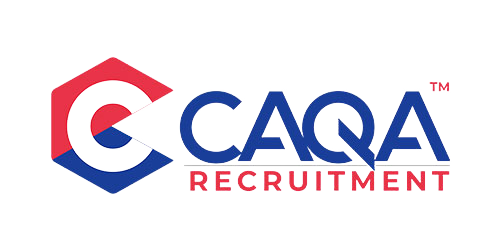Artificial Intelligence (AI) has been the buzzword for several years now, captivating the imaginations of business leaders, technologists, and even governments across the globe. Promises of massive productivity boosts, reduced labour costs, and unprecedented innovations have fueled the AI frenzy. However, MIT Professor Daron Acemoglu, an expert in economics and technology, is sounding the alarm about the overly optimistic expectations surrounding AI. He argues that the technology, at least in its current form, is unlikely to deliver the dramatic changes many are expecting.
Acemoglu's stance, which he has expressed in various forums and writings this year, has garnered significant attention—particularly because of his track record as a best-selling author of books like Why Nations Fail, which explores the political and economic factors that contribute to national prosperity or failure. His scepticism about AI offers a compelling counter-narrative to the current discourse dominated by optimistic projections of an AI-driven future.
AI and Its Overhyped Potential
Acemoglu’s core argument is that companies are wasting vast sums of money on AI because its overall effect on the workforce and productivity will be marginal, at least for the foreseeable future. He estimates that AI will significantly displace or assist only about 5% of the workforce. According to Acemoglu, this is far too small a number to justify the billions currently being poured into AI research and development by tech firms and corporations worldwide.
His concerns stem from the simple fact that AI is not yet capable of replacing humans in most work environments. While large language models like ChatGPT and other AI tools can perform some tasks, they lack the reliability needed for critical decision-making, creative problem-solving, and complex human interactions. Acemoglu believes that these tools are often mistakenly viewed as potential replacements for human labor when, in reality, they are far from achieving the reliability required to perform many jobs currently held by humans.
Acemoglu paints three possible scenarios for AI's trajectory:
- The AI Hype Cools Down: In this scenario, companies will make modest investments in AI technology, realising that the technology's capabilities have been overstated. This cooling off would be gradual, and businesses would retain a cautious approach toward AI investment.
- AI Frenzy Leads to a Crash: Acemoglu also foresees a scenario where the current AI mania continues to grow for another year or two, followed by a massive tech stock crash. This would leave many companies and investors disillusioned, leading to what he calls an "AI spring followed by an AI winter." In this outcome, AI investments will freeze, and many businesses will step away from the technology altogether.
- The Mania Escalates Before a Massive Collapse: Acemoglu’s third scenario is arguably the most dramatic. He envisions companies investing hundreds of billions in AI, leading to mass layoffs and significant structural changes in industries, only for these companies to eventually realise that AI cannot deliver the revolutionary results promised. They would then scramble to rehire the workers they laid off in favour of machines, as the proverbial "emperor has no clothes."
The professor believes that the second and third scenarios are the most likely to unfold. As the AI hype intensifies, he fears that the eventual collapse will be harsh as businesses realise the limitations of the technology too late.
The Allure of AI: Why Are Companies Betting Big?
Despite Acemoglu’s warnings, the fascination with AI continues to grow. Many CEOs see AI as the ultimate worker—one that does not need to sleep, take lunch breaks, or demand salaries. These executives hope that AI will replace or augment white-collar jobs, offering significant cost savings and efficiency gains.
AI's potential applications are vast, from automating customer service through chatbots to developing algorithms that make crucial business decisions. But while the technology's possibilities are exciting, Acemoglu argues that companies have jumped on the AI bandwagon without fully understanding its limitations.
The widespread adoption of AI technologies has been accelerated by a combination of factors, including technological advancements, increased investment, and the pressure to innovate. In sectors like healthcare, finance, and manufacturing, businesses are eager to leverage AI to streamline processes, reduce human error, and gain a competitive edge.
Yet, Acemoglu urges caution. He asserts that the billions being invested in AI today may not yield the expected returns for a long time, if at all. This disconnect between AI's potential and its current capabilities could lead to widespread disappointment and wasted resources.
The Reliability Problem: Why AI Isn’t Ready to Replace Humans
One of Acemoglu's biggest concerns is that AI, particularly large language models like ChatGPT, lacks the reliability needed to replace humans in most jobs. While AI can perform repetitive tasks and even simulate human conversation, it is prone to errors and lacks the contextual understanding that is crucial in many industries.
For example, while AI can assist with coding or writing reports, it struggles with tasks that require nuanced decision-making or creative problem-solving. Even in areas like data analysis, where AI excels, human oversight is still necessary to ensure accuracy and relevance.
The concept of "AI hallucination," where AI systems generate plausible-sounding but incorrect or misleading information, is a significant concern for those considering AI for decision-making roles. As AI tools become more complex, the risk of them producing unreliable outputs increases. This undermines trust in the technology and creates a need for human supervisors to step in, defeating the purpose of fully automating tasks.
In healthcare, for example, the stakes are too high to rely on AI systems that are not yet fully mature. Misdiagnoses or incorrect treatment recommendations can have serious, even fatal, consequences. In finance, AI tools could potentially make costly mistakes in risk assessments or trading decisions, further demonstrating the need for human oversight.
The Myth of Job Replacement
The fear that AI will replace human workers is another area where Acemoglu provides clarity. He believes that AI will, at most, significantly affect 5% of jobs in the near term, meaning that the widespread fears of mass unemployment due to AI are overblown. Most jobs require a level of interpersonal interaction, creativity, and judgment that AI simply cannot replicate.
Moreover, even in industries where automation is more feasible—such as manufacturing or customer service—AI is not yet advanced enough to replace all human workers. In many cases, AI will complement human work, augmenting workers' abilities rather than replacing them outright. This hybrid approach, where humans and machines work together, is more likely to define the future of work.
Despite these facts, the narrative that AI will decimate white-collar jobs has gained significant traction. This is partly due to the uncertainty surrounding technological advancements, as well as the fear of the unknown. While AI may reduce the number of repetitive tasks in some industries, the idea that entire professions will vanish overnight is unrealistic.
The Broader Economic Implications of AI
Acemoglu also highlights the broader economic implications of AI investment. If companies continue to pour money into AI technologies without fully understanding their limitations, they could be setting themselves up for massive financial losses. This, in turn, could lead to a ripple effect throughout the economy as sectors reliant on AI fail to deliver the expected productivity gains.
In the tech industry, for example, the AI gold rush has already led to inflated stock prices for AI-related companies. If these companies fail to meet investor expectations, the result could be a significant market correction, similar to the dot-com crash of the early 2000s.
Acemoglu’s fear is that many companies are treating AI as a silver bullet that will solve all their problems without considering the real challenges of implementation and integration. This over-reliance on AI could lead to a cycle of disillusionment, where companies invest heavily in the technology only to scale back or abandon these efforts when they fail to see immediate returns.
The Role of Policy and Regulation
Acemoglu's scepticism toward AI also extends to the role of policymakers and regulators. He argues that governments need to take a more active role in shaping the future of AI, particularly when it comes to mitigating potential risks. Without proper regulation, AI could exacerbate existing inequalities as companies use automation to cut costs at the expense of workers.
Regulation is also crucial in ensuring that AI is used responsibly and ethically. Issues such as data privacy, algorithmic bias, and the potential for AI to be used in harmful ways need to be addressed through comprehensive policy frameworks. Policymakers must ensure that AI development aligns with societal values and that the benefits of AI are distributed equitably across different sectors of the economy.
A Call for Realism in AI
In conclusion, Daron Acemoglu’s warnings about the overhyped promises of AI should not be taken lightly. While AI has the potential to revolutionise certain aspects of the economy, its current capabilities are far more limited than many business leaders and technologists would like to admit. As companies continue to invest billions in AI, they must do so with a clear understanding of its limitations and a realistic vision of what it can achieve.
For now, the role of AI will likely be one of augmentation rather than replacement. Human oversight will remain essential in most industries, and the promises of fully autonomous systems are still far from being realised. Businesses that approach AI with caution and a long-term perspective will be better positioned to succeed in an increasingly automated world.
It is crucial that we move away from the hype and start having a more measured conversation about what AI can and cannot do. Only then can we harness the full potential of this technology without falling victim to the unrealistic expectations that are currently driving the AI gold rush.


































